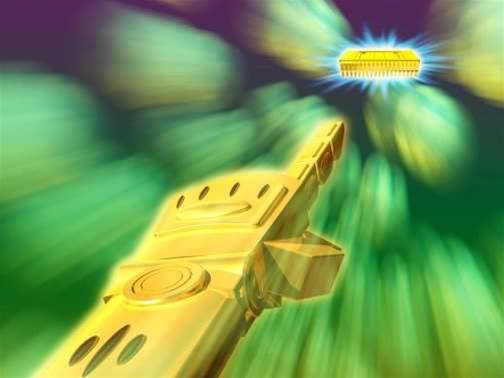
The Casimir force contributes to what engineers of microelectromechanical systems (MEMS) call “stiction” -- when two very small, very close objects tend to stick together.
Stiction has been blamed for complications in the fabrication of MEMS, which are tiny moving machines that are used in acceleration sensors in cars and tilting mirror arrays in display systems.
As consumer products require MEMS that are smaller and smaller in size, researchers expect quantum effects like the Casimir force to come into play.
“The Casimir force might be one of the many reasons that very small, movable components in micromechanical devices sometimes stick together,” said Ho Bun Chan, a assistant professor of physics at the University of Florida who is researching the Casimir force.
“The Casimir effect increases rapidly as the separation between components decreases. It becomes significant when the separation is reduced to below about 400 nm,” he told iTnews.
Separations between current components are more than 10 times larger than the distances at which the Casimir force becomes significant, so the force is not a worry for MEMS manufacturers currently.
But as the separations shrink from micrometres to the nanometre scale, Chan’s research into the Casimir force could play an increasing role in reducing stiction.
“Moore's law describes the increase of the number of components in an integrated circuit over time. One might expect that a similar trend applies to micromechanical devices,” he said.
“If the miniaturization continues, the separation between components might become so small that Casimir forces must be considered in the design and operation of mechanical devices.”
In what is said to be the world’s first experimental observation of its kind, Chan and his research team were able to significantly reduce the Casimir force by altering the surface of a metal plate.
The Casimir force was found to be smaller on a surface with nanoscale corrugations compared to a smooth flat surface.
However, the reduction in the force was found to be smaller than what the researchers estimated by considering surface area of the plates.
If corrugating the metal reduced its total area by half, the Casimir force was reduced by only 30 to 40 percent, which Chan said demonstrates that the force depends on the geometry of the object.
“My experiment is a step towards controlling the Casimir force by changing the shape of the interacting objects,” he said.
“It could one day be relevant in reducing the tendency of movable, nanoscale components from coming into contact of each other due to quantum effects.”




.png&h=140&w=231&c=1&s=0)
_(20).jpg&h=140&w=231&c=1&s=0)





 iTnews Executive Retreat - Security Leaders Edition
iTnews Executive Retreat - Security Leaders Edition











_(1).jpg&h=140&w=231&c=1&s=0)



